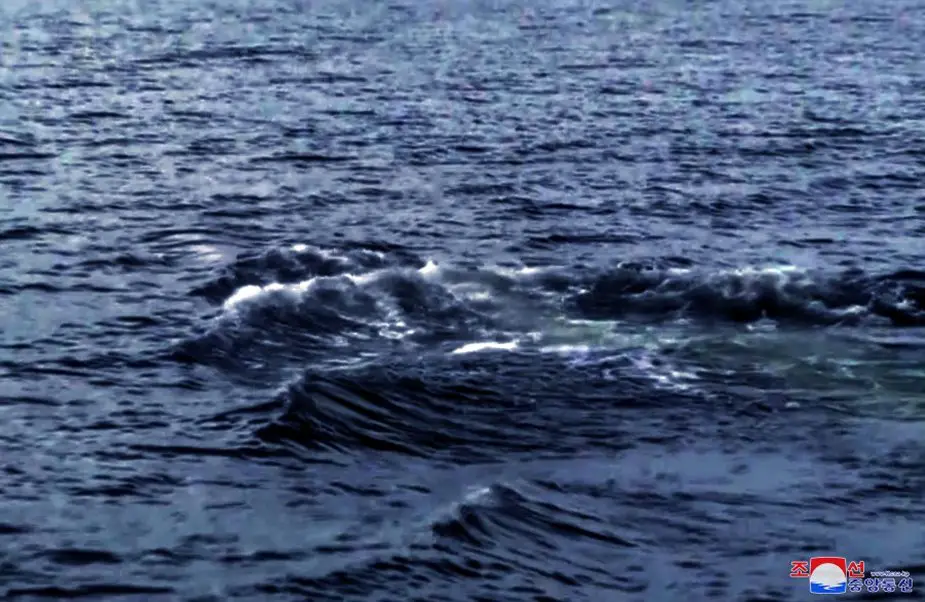Breaking news
North Korea tests new nuclear unmanned underwater vehicle Haeil.
According to information published by the KCNA on March 24, 2023, the Democratic People's Republic of Korea (DPRK) has conducted important weapon tests and firing drills, focusing on a new underwater attack weapon system.
Follow Navy Recognition on Google News at this link
 Unmanned Underwater Vehicle Haeil. (Picture source: KCNA)
Unmanned Underwater Vehicle Haeil. (Picture source: KCNA)
The tests were led by the WPK Central Military Commission and aimed to alert the enemy to an actual nuclear crisis and verify the reliability of their nuclear force for self-defense.
The underwater nuclear strategic attack weapon system, named "Unmanned Underwater Nuclear Attack Craft 'Haeil'", is designed to infiltrate operational waters stealthily and create a super-scale radioactive tsunami through underwater explosions to destroy enemy naval strike groups and major operational ports. The drone can be deployed at any coast or port or towed by a surface ship for operation.
The drill included a test in which the underwater nuclear attack drone traveled from the coast of Riwon County to Hongwon Bay and detonated its test warhead underwater after cruising for 59 hours and 12 minutes. The test verified the drone's reliability, safety, and lethal strike capability.
Additionally, on March 22, a launching drill took place for strategic cruise missile units to familiarize themselves with the procedures and processes for carrying out tactical nuclear attack missions.
The drill involved the test launch of "Hwasal-1" and "Hwasal-2" strategic cruise missiles, which accurately hit their targets in the East Sea of Korea after flying on their programmed courses.
About the Hwasal
The Hwasal is a long-range strategic cruise missile developed by North Korea. On October 13, 2022, the Korean Central News Agency reported that North Korean Chairman Kim Jong Un had observed the launch of the Hwasal cruise missile by a tactical nuclear force the previous day.
The two long-range strategic cruise missiles launched accurately hit their target, set 2,000 km away, after flying for 12,340 seconds along an elliptical and figure-eight trajectory in the airspace over the west coast of Korea.


























